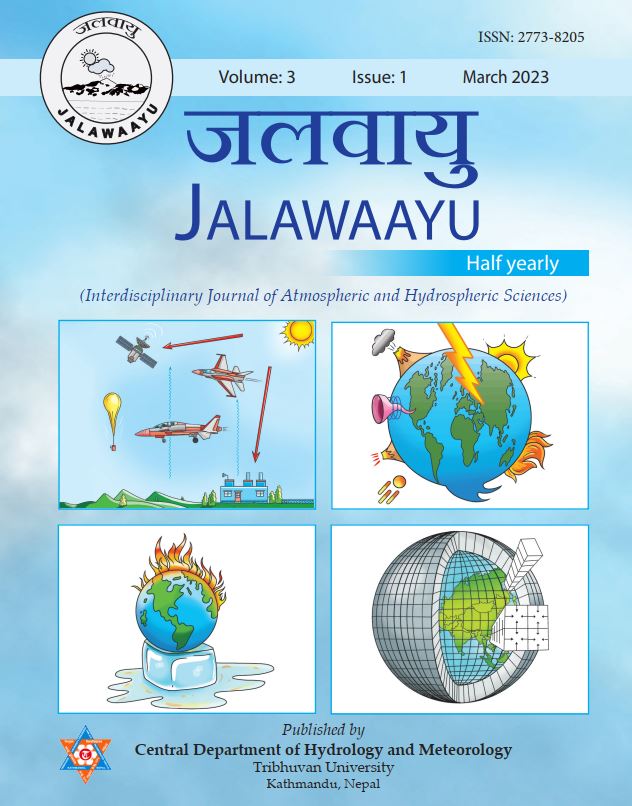Flood Hazard Mapping Using a Multi-Criteria Decision Analysis Approach Over the Indrawati River Basin
DOI:
https://doi.org/10.3126/jalawaayu.v3i1.52058Keywords:
Analytic Hierarchy Process, Flood Causative Factor, Flood Hazard, Pairwise Comparison MatrixAbstract
Floods are devastating natural hazard responsible for direct mortality, deterioration of crops, and damage to infrastructure and property. So, their study is crucial for watershed management and mitigation of flood hazards. The main objective of this study was to create a scientifically valid flood hazard map of the Indrawati River Basin (IRB) through the use of the multi-criteria decision analysis approach. Topographical Wetness Index (TWI), Elevation (EL), Slope (SL), Precipitation (PPT), Land Use/Land Cover (LULC), Normalized Difference Vegetation Index (NDVI), Distance from the River (DRI), Distance from the Road (DRO), Drainage Density (DD), and Soil Type (ST) were chosen as flood triggering factors based on literature review, data availability, and catchment characteristics. The analytic hierarchy process (AHP) method was used for determining the relative weight of each flood causative factor. All these factors were resampled into a 30 m × 30 m pixel size. Based on an evaluation of satellite imagery, 30 flood points were identified in the IRB, and these points were used as the testing dataset for validating the outcome. Based on results, the IRB has been classified into five different flood susceptible zones; very low, low, moderate, high, and very high. According to the study, 13%, 26%, 30%, 23%, and 8% of the total area are in very low, low, moderate, high, and very high flood susceptible zones, respectively. The Area Under the Curve (AUC) value for the success rate was 0.792. The results of this study will be crucial for concerned parties to design early warning systems and flood risk reduction measures for flood preparedness.
Downloads
Downloads
Published
How to Cite
Issue
Section
License

This work is licensed under a Creative Commons Attribution 4.0 International License.
Copyright © of the articles is held by the authors.

